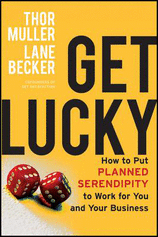Thoughts and Readings on Collaboration, Innovation, and Engagement
I’m sitting here on a Monday afternoon, and I’m trying to synthesize the various things that I’ve learned about over the past week or so.
First, Kent Allaway asked at the end of his PCMA blog post on Blurring Lines, ” If information truly is the key, how do we share knowledge among the community, in order to benefit ourselves and our customers…?” In this post Kent talked about competition, cooperation, and co-opetition. More and more, organizations need to find ways to add value to the lives of their customers. They made need to go outside their four walls. They may need to provide wins for others while staying focused on their own goals.
It calls to mind a recent chat I had with Hilary Marsh. We were talking about content management, content curation, content strategy, content marketing (you get the idea… content). Hilary gave me this great illustration which has stuck with me. Imagine a museum. Suppose 70% of their exhibits come from their own holdings. To make up the difference and provide their patrons with a great experience, they have to “partner” with museums and other entities and borrow from their collections. Who wins? Both do! The local museum is not looked down on because they had to borrow from a museum in Philadelphia or Chicago or San Francisco. Rather the perception is favorable. The curator made the efforts necessary to expose the local audience to exhibits they might not otherwise see. And if those individuals find themselves in one of those cities, they might be more apt to visit that museum and see the rest of what they have on display. In my thinking it’s giving up control to gain prominence.
 Interestingly enough, I heard or read two references Friday to 3M, historically known as one of the most innovative companies in the US. In 5 Ways Process is Killing Your Productivity, Lisa Bodell, author of Kill the Company: End the Status Quo, Start an Innovation Revolution, wrestles with the question, “When people’s jobs depend on meeting metrics and maintaining the status quo, can you fault them for their reluctance to expend any energy toward creation and invention?” Process keeps people in meetings and writing reports. How do we create, foster, and nurture an environment of innovation, collaboration, and engagement? (see how I used 3 of my 5 MIICE words for 2012 right there?)
Interestingly enough, I heard or read two references Friday to 3M, historically known as one of the most innovative companies in the US. In 5 Ways Process is Killing Your Productivity, Lisa Bodell, author of Kill the Company: End the Status Quo, Start an Innovation Revolution, wrestles with the question, “When people’s jobs depend on meeting metrics and maintaining the status quo, can you fault them for their reluctance to expend any energy toward creation and invention?” Process keeps people in meetings and writing reports. How do we create, foster, and nurture an environment of innovation, collaboration, and engagement? (see how I used 3 of my 5 MIICE words for 2012 right there?)
The other reference to 3M came from a recent Bloomberg Radio interview with Thor Muller and Lane Becker, authors of  Get Lucky: How to Put Planned Serendipity to Work For You and Your Business. Their perspective is that one has to have a commitment to goals while having an openness to other ideas and directions. Muller and Becker believe in training oneself to be able to “link together unrelated concepts in order to generate meaningful insights”. An individual also has to be in “motion” to get out of a routine and be able to “run into new ideas in new contexts“. 3M has put itself in a position to be innovative by creating this kind of work environment. Thus, by following these kinds of approaches, the “accidental” discovery of Post-It notes was not really accidental.
Get Lucky: How to Put Planned Serendipity to Work For You and Your Business. Their perspective is that one has to have a commitment to goals while having an openness to other ideas and directions. Muller and Becker believe in training oneself to be able to “link together unrelated concepts in order to generate meaningful insights”. An individual also has to be in “motion” to get out of a routine and be able to “run into new ideas in new contexts“. 3M has put itself in a position to be innovative by creating this kind of work environment. Thus, by following these kinds of approaches, the “accidental” discovery of Post-It notes was not really accidental.
And, of course, I wouldn’t have gotten to this without reading Dave Lutz’s blog post on Creating Planned Serendipity For Your Conference Success. He has some great ideas on how to foster engagement and connections at conferences. I like his take on an “army of connectors”. Putting attendees in proximity to other people and connecting them and then creating an environment conducive to conversations are key components to this concept of planned serendipity.
What additional insights can you share on collaboration, innovation, engagement, and planned serendipity? What has challenged you recently to think differently about your organization’s goals and strategies?